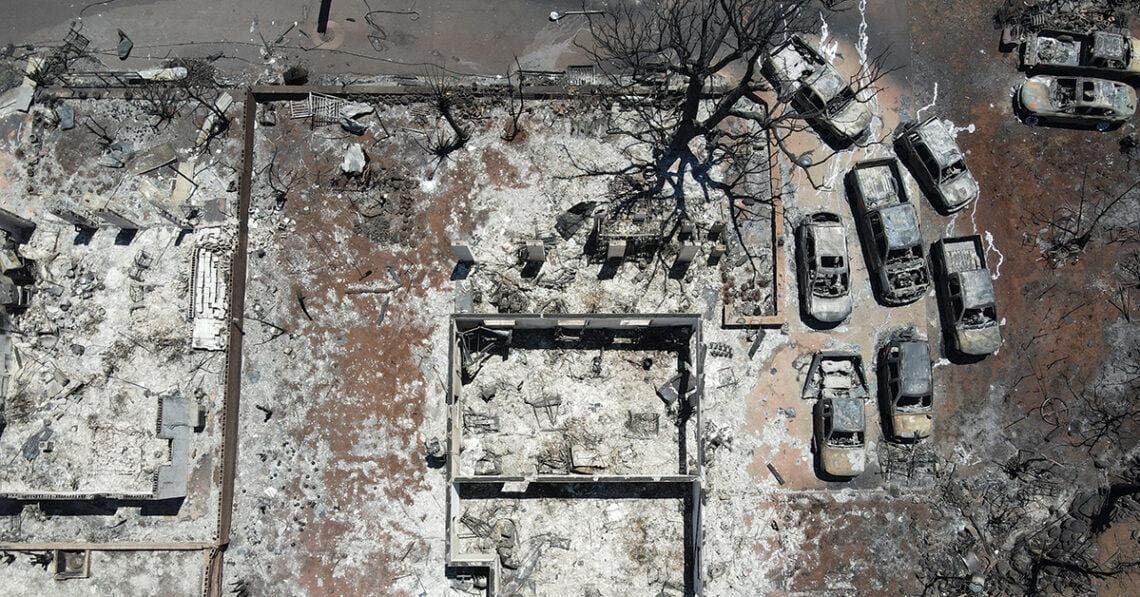Global warming and climate change are fueling natural disasters at an increasingly frequent rate, and few locales are immune from the potentially devastating effects. It’s no longer enough for companies to claim they are doing their part; clear action is required, argues Octavio Sandoval of Illumen Capital.
The summer of 2023 is the hottest since global records began in 1889, according to NASA. Extreme heat across much of the world has exacerbated deadly wildfires in Canada and Hawaii (which killed 115 people and nearly destroyed an entire city) and put millions of people in harm’s way due to dangerously high temperatures.
The Lahaina fire was the deadliest U.S. wildfire in more than a century, and it is a climate disaster that warrants immediate action from everyone, and companies are not the exception.
Euronews reported that record heat blanketed much of the globe over the summer, and the heat index at an airport in Iran reached 152 degrees Fahrenheit. Italy, Greece and Spain were sweltering, with temperatures as high as 118 degrees, and across the United States, more than 80 million people faced dangerous levels of heat.
Per CNN, global sea levels are rising as a result of human-caused global warming, with recent rates being unprecedented over the past 2,500-plus years. For context, 39% of the U.S. population lives in coastal communities, putting many people directly in harm’s way because of rising seas and potentially more intense hurricanes. Storms like Hurricane Harvey in 2017 may seem less like unusually catastrophic anomalies and more like the new normal. That year saw the U.S. set a record for natural disaster-related losses, more than $380 billion.
From the Lahaina fires to increased temperatures and rising sea levels, the climate crisis has been felt all over the world and continues to impact everyone. This crisis serves as a collective harsh reminder that the effects of climate change are happening now and we can no longer turn a blind eye.
Climate change is a threat to human well-being and planetary health. There is a rapidly closing window of opportunity to secure a livable and sustainable future for all. The choices and actions implemented by companies in this decade not only influence consumer choices, but echoes of today’s company policies will be felt now and for hundreds of years.
As such, companies now more than ever need to prioritize corporate social responsibility initiatives, such as reducing carbon footprints and championing DEI goals and objectives.
The effects of climate change are felt at every level, including leadership, customers and stakeholders. Therefore, when customers see authentic commitment to CSR at a company level, they are more likely to purchase with mission alignment and commit to brands that share similar values. Creating and sustaining CSR policies is not only beneficial for the planet and consumers but also for company growth.
Building a Better Office: How Employers Can Support Gender Diversity
This year alone, more than a dozen states have enacted anti-LGBTQ+ legislation, many of them seeking to curtail the freedom of transgender people. Hundreds more bills remain up for consideration across the country. It’s little wonder, then, that many trans workers feel unsupported, whether politically or professionally.
Read moreDetailsRelief equity is required
Systemic factors make communities of color more vulnerable to climate change. According to the American Public Health Association (APHA), communities of color are more likely to experience pre-existing health conditions and poor living conditions than their white counterparts. A historical lack of power and representation in political and economic systems makes it difficult for these communities to build climate resilience, the ability to prepare and respond to extreme events that occur due to climate change.
The EPA released an analysis in 2021 that shows that the most severe harms from climate change fall disproportionately upon underserved communities that are least able to prepare for, and recover from, heat waves, poor air quality, flooding and other impacts.
Black people are projected to face higher impacts of climate change compared to all other demographic groups. For example, with 2°C (3.6°F) of global warming, Black people are 34% more likely to live in areas with the highest projected increases in childhood asthma diagnoses. They are also 40% more likely to live in areas with the highest projected increases in extreme temperature related deaths.
Latinx individuals also have high participation in weather-exposed industries, such as construction and agriculture, which are especially vulnerable to the effects of extreme temperatures, according to the EPA’s analysis. With 2°C (3.6°F) of global warming, Latinx individuals are 43% more likely to live in areas with the highest projected reductions in labor hours due to extreme temperatures. With regards to transportation, Latinx individuals are about 50% more likely to live in areas with the highest estimated increases in traffic delays due to increases in coastal flooding.
Historically, relief equity has been limited, especially for underserved communities. Current disaster recovery efforts in the United States exacerbate racial disparities, as underrepresented people of color experience greater harms from natural disasters, receive less support, lose wealth and take longer to recover.
Historically marginalized populations, including communities of color and low-income communities, are more vulnerable to the worst effects of tropical storms and disasters like hurricanes. While a natural disaster does not discriminate against the type of person in its path, the response and efforts to recovery can.
In particular, FEMA, which is charged with aiding those affected by disasters, provides help that systemically benefits white victims more than it benefits people of color, according to a growing body of research. By addressing the systemic factors that lead to these outcomes and prioritizing equity, organizations like FEMA will be better positioned to reduce racial disparities; to provide equitable assistance; and to ensure all communities have the resilience, resources and opportunities needed for a strong recovery. Not only do public agencies need to reevaluate their relief equity practices, but businesses such as banks and insurers must also step up to help the community that they serve.
The role corporate leadership plays in providing climate relief equity
Companies have a responsibility to their customers, funders, the environment and the communities they directly or indirectly affect, because as climate change keeps showing us, we don’t exist in a vacuum. Ultimately, sustainability and social responsibility cultivate strong customer loyalty, since they create trust that a company can take care of its customers as much as it takes care of its environment. It also encourages stakeholder commitment in their mission and services. When done with an equity perspective, social responsibility can also elevate underrepresented entrepreneurs and communities.
As we think creatively for solutions in this crisis, we must think intersectionally. The fight for climate justice cannot succeed without the inclusion of people of color, the communities most disproportionately affected by climate change. From healthy food access, to pollution, to clean water, to wildfires and hurricanes, low-income communities of color are most disproportionately affected.
Racial biases continue to expose low-income communities of color to heightened environmental risks, a trend that will only continue as climate change exacerbates natural and manmade disasters. As such, climate relief equity must be woven intentionally to address the socioeconomic, sociocultural and physical impacts of climate change.
At the fund level, this means investing in underrepresented fund managers. Currently, only 1.4% of venture capital is managed by women and people of color. We need to elevate underrepresented fund managers who will address historical biases through their investments, which in turn can create authentic policies that bolster customer loyalty, reaffirm stakeholder commitment and ultimately better communities.
Everyone in the corporate ecosystem, including fund managers, should recognize both the impact of the equity imbalance and their power in enacting change.




 Octavio Sandoval, CFA, CAIA is director of investments at Illumen Capital. He seeks innovative solutions to address social and economic injustice facing historically disadvantaged and underrepresented communities, believing structural problems require structural solutions. Before Illumen Capital, Octavio was a leader at MassMutual Life Insurance Co. in building the emerging fund manager program, which allocated $50 million to a wide variety of BIPOC-led funds that invest in BIPOC-led startups. At MassMutual, Octavio also deployed more than $500 million in allocations to various alternative investment strategies including private equity and private credit. Prior to MassMutual, Octavio held positions throughout traditional finance, including roles within investment banking, private wealth management and capital markets. Opinions expressed are those of the writer and do not reflect the official position of Illumen Capital.
Octavio Sandoval, CFA, CAIA is director of investments at Illumen Capital. He seeks innovative solutions to address social and economic injustice facing historically disadvantaged and underrepresented communities, believing structural problems require structural solutions. Before Illumen Capital, Octavio was a leader at MassMutual Life Insurance Co. in building the emerging fund manager program, which allocated $50 million to a wide variety of BIPOC-led funds that invest in BIPOC-led startups. At MassMutual, Octavio also deployed more than $500 million in allocations to various alternative investment strategies including private equity and private credit. Prior to MassMutual, Octavio held positions throughout traditional finance, including roles within investment banking, private wealth management and capital markets. Opinions expressed are those of the writer and do not reflect the official position of Illumen Capital.










